Linux operating systems for different tasks
There are a huge number of Linux operating systems, each of which offers one or another advantage. Various operating system options can make it difficult to choose and take a considerable amount of time to find the right one for your needs. Ubuntu, Mint, Elementary, Fedora, openSUSE ... a list of user-friendly distributions may seem like an endless story. Need a simpler OS? For games? Or maybe you need a multimedia distribution for comfortable viewing and listening to media content? They are all available.
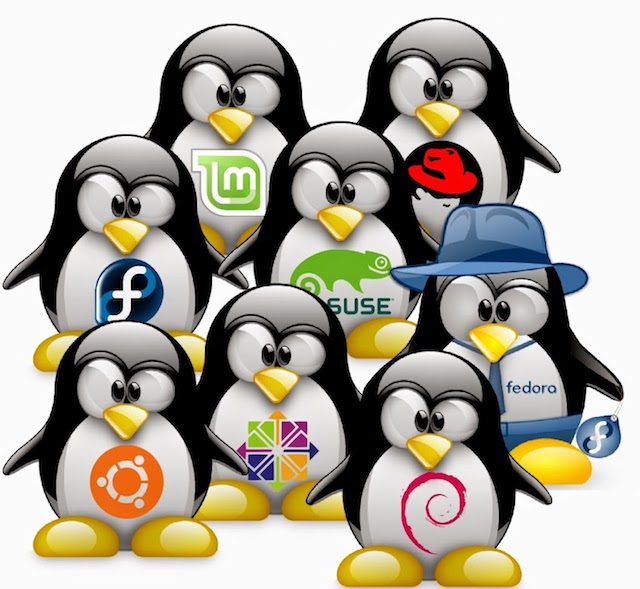
Here is a regularly updated list of Linux operating systems, optimally suited for specific needs and requirements of the project. Material - adaptive translation of the article Christian Cawley The Best Linux Operating Systems .
Here is a list:
')
Ubuntu, a distribution based on Debian, has released a new version of the popular Linux distribution Ubuntu - 17.10 Artful Aardvark with the Gnome 3 (3.26) and Gnome Shell GUI (it is characterized by higher customization and flexibility). Ubuntu is one of the most widely used Linux operating systems. When switching to Linux, most likely this distribution will be one of the first that you start to use. There is even a raspberry version for the Raspberry Pi. For downloading of version 17.10 only 64-bit edition is available (1.4 GB).
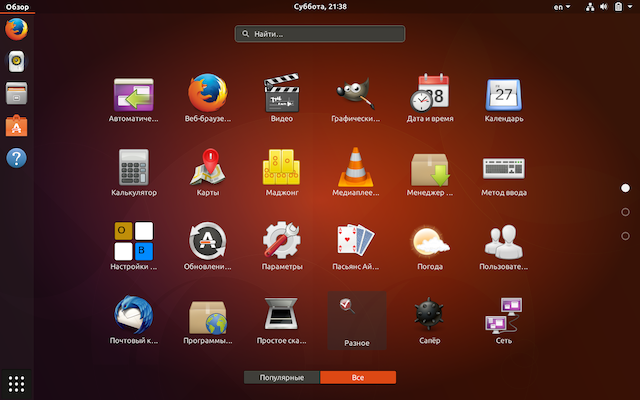
Features and changes:
- the new GNOME desktop — the biggest change has been to the desktop environment. In Ubuntu version 17.10 instead of Unity - GNOME, version 3.26.1.
- Wayland (protocol of interaction between KOM and clients). By default, the display server is Wayland, but for systems and users who prefer X.Org, you can choose the “Ubuntu on X.org” session
- new on-screen keyboard Caribou
- server build with updated versions of QEMU 2.10, libvirt 3.6, DPDK 17.05.2, Open vSwitch 2.8, Samba 4.6.7
About the main innovations by clicking on the link
Ubuntu has many derivatives, the Kubuntu distribution is one of them, using the KDE GUI. Kubuntu's user-friendly OS is part of the Ubuntu project. A free and open-source alternative to Windows and Mac OS X that contains everything you need to work. By default, Kubuntu comes with a Firefox browser. Other browsers (Chromium, Rekonq) can be installed from the Kubuntu repositories. KDE Telepathy - Kubuntu messenger - allows you to communicate via Facebook, Google Talk, AIM, ICQ, Jabber, Messenger, Skype, etc. The Kubuntu distribution comes with music and a video player: just choose a track or video, and Kubuntu takes care of the rest. LibreOffice (office application) is compatible with all office applications, including Microsoft Office.
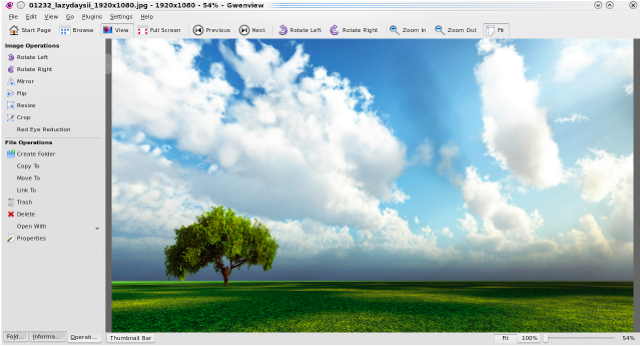
On October 19th, Kubuntu 17.10 Artful Aardvark was released. 1400 developers worked on making corrections - 14 thousand fixes, half of which are related to device drivers.
Major innovations release by clicking on the link
Linux Mint - the freedom that led to elegance - a powerful and simple distribution. Based on Ubuntu Linux, Mint is a reliable distribution, according to DistroWatch (a news site specializing in OS ratings publishing). Linux Mint recently held a leading position in the ranking among users who have switched to Linux from Windows or macOS.
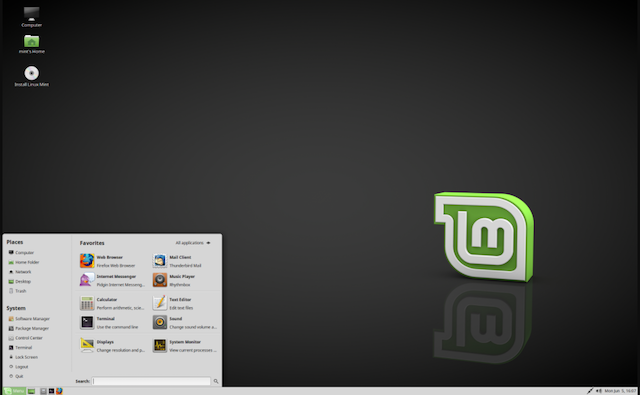
Mint uses the free Cinnamon GUI, it can support others - Xfce, MATE, KDE. There is a Debian-based Linux Mint (LMDE) that is aimed at experienced Linux users, less friendly than Ubuntu-based Linux Mint.
The latest release of Linux Mint 18.2, codenamed “Sonya,” based on Ubuntu 16.04 LTS and Linux 4.8 kernel, comes with new versions of the desktop cinnamon 3.4, MATE 1.18, KDE Plasma 5.8 LTS and Xfce 4.12. Minimum system requirements for installing Linux Mint 18.2: 1 GB of RAM, 15 GB of disk space.
In September, there was news about the start of work on the release of Linux Mint 18.3, codenamed "Sylvia / Sylvia". In addition to the name, we also know that the distribution kit will be supplemented with the Timeshift backup tool, improvements have been made to the Xreader. "Timeshift is a great utility that will work in conjunction with the mintBackup application by default." Improvements will also affect the PDF reader toolbar (Xreader).
Deepin is a distribution that was previously based on Ubuntu, with DDE GUI. For those who have switched from Windows or macOS to Linux, the simplicity of the distribution kit will please, the OS is nice and friendly with normal settings, there is a window manager - Gala. The visual effects and attractive appearance of the distribution are a nice plus. The new version 15.4.1 added sound effects and system sounds. The distribution comes with its own applications such as Deepin Software Center, DMusic, DPlayer. Excellent alternative to Windows for a wide range of users (home and office), support for 30 languages (even Hindi). After optimizing the effects of the window manager, you can set a different wallpaper for each workspace. Gesture support for multi-touch.
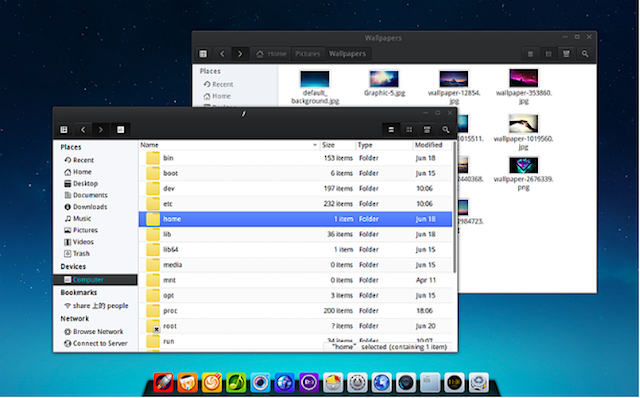
Application Center - Deepin Store, easy to view and install software, which is important for new Linux users. As for the minimum system requirements: 1 GB of RAM, 10 GB of free disk quota.
PCLinuxOS is positioned as one of the most common Linux distributions among newbies, the KDE Plasma Desktop GUI is installed as standard. You can easily install drivers, office applications, edit photos, comfortable work with multimedia - provided. By the way, it is perfect as a second OS. In PCLinuxOS there is a full set of applications for comfortable web surfing, e-mailing, messaging, viewing online video, GIMP, Picasa and others for working with multimedia content, the office application LibreOffice.

Proceeding from the name PCLinuxOS is the desire to “bring together” the Windows and Linux operating systems. How do you have the Windowsesque start menu? Among the features of PCLinuxOS is the speed of deployment and compactness of the installation, the disadvantages are the problem with fake RAID and the lack of support for the btrfs file system. Distribution undemanding to resources: minimum 512 MB of RAM, 12 minimum and 20+ GB (for full installation) free disk quota.
Linux Lite based on Ubuntu LTS is one of the simplest distros, successfully adapted for those who take the first steps in Linux, with a simple, intuitive Xfce graphical environment. The "Start" menu is made in the spirit of Windows. The flexibility of the system comes with a basic set of applications that will suit both novice Linux users and more advanced ones.
Linux Lite is the most friendly and understandable OS that will simplify the transition to Linux from Windows. Thunar version 1.6.11 is the default file manager, Firefox 52.0.2 is a browser, there are applications for working with multimedia Gimp 2.8.20, VLC media player version 2.2.2, office application is LibreOffice 5.1.6. Non-resource-intensive Linux Lite can be installed on old hardware, there will be enough 512 MB RAM.
Zorin OS is focused on Linux newbies, Windows users will easily and painlessly change it, since the interface is very similar to Windows Explorer in Microsoft Windows. The distribution was created based on Ubuntu. There are many analogues of Windows applications.

The similarity of Zorin OS 9 with Windows 7 eliminates discomfort when moving to Linux! According to the developers, the transition to Zorin OS is like a breeze. You can even run many Windows applications inside Zorin using Wine . Fast, powerful, secure - this will be your device with this distribution.
The Zorin OS team this summer announced the release of the Zorin OS 12 Lite. Now, as a basic desktop environment - Xfce, which opens up a wide field for customization and settings. Zorin OS 12 Lite runs on the Linux kernel version 4.8.
Elementary OS is a fast and easy Ubuntu-based distribution. As a graphic shell - minimalistic Pantheon. Elementary OS is an aesthetically appealing OS with simple applications: Pantheon Files file manager, Geary email client, Midori lightweight and functional browser, Totem free media player, Shotwell photo manager. Elementary OS apps run fast and meet user everyday needs. Few opportunities for customization and fine-tuning - as a fee for absolute simplicity.
Do you have to pay for everything, even open source software? The developers of Elementary OS will gladly accept your contribution to the support of the OS. There is a desire to feel the attractive appearance of macOS, the comfort of Windows and the stability of Linux, then Elementary OS can be your choice.
The popular openSUSE is, so to speak, the “user friendly” distribution of Linux, attractive and interesting for newbies in the Linux world, but also useful for developers, because openSUSE products allow you to get the full source code for each binary package in the distribution. Positioned as "the best choice for system administrators, developers and ordinary users." The distribution supports such GUIs - GNOME, KDE, Xfce, LXDE, E19.
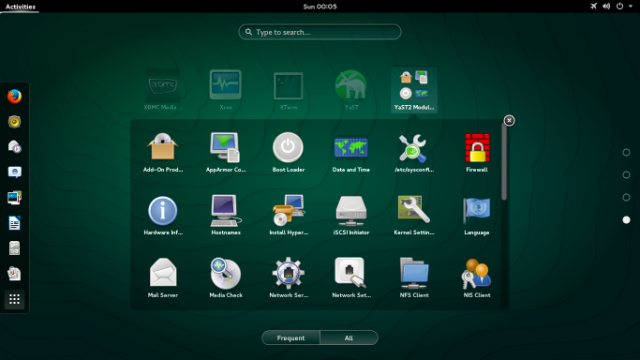
The openSUSE distribution tools are: Open Build Service (OBS) , openQA , YaST , Kiwi . This summer, openSUSE Leap 42.3 was released . Minimum system requirements: Pentium 4 processor 1.6 GHz or higher, from 1 GB RAM, from 3 GB free disk quota.
By default, Fedora comes with the GNOME GUI, it is possible to quickly and easily change the graphical skins (KDE, Xfce, LXDE, MATE and Cinnamon). Love to experience and work with new versions of programs, then the distribution kit will best suit your requests.
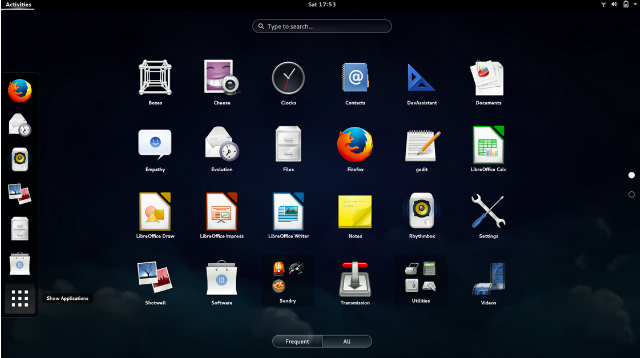
In July 2017, the release of the Fedora 26 operating system for personal computers, servers, cloud and embedded devices became available. Many improvements were made: GNOME 3.24.2 graphical shell (Fedora Workstation), Linux based OS 4.11.8, default package manager DNF 2.0, compiler GCC 7. Fedora 26 comes with updated versions of Python 3.6, OpenSSL 1.1 .0, Boost 1.63, Ruby 2.4, GHC 8.0, Golang 1.8.
Debian is the oldest and most popular Linux distribution with the GNOME GUI. There are projects based on other Debian GNU / kFreeBSD kernels (the FreeBSD kernel), Debian GNU / Hurd (with the GNU Hurd kernel) and others are being developed.
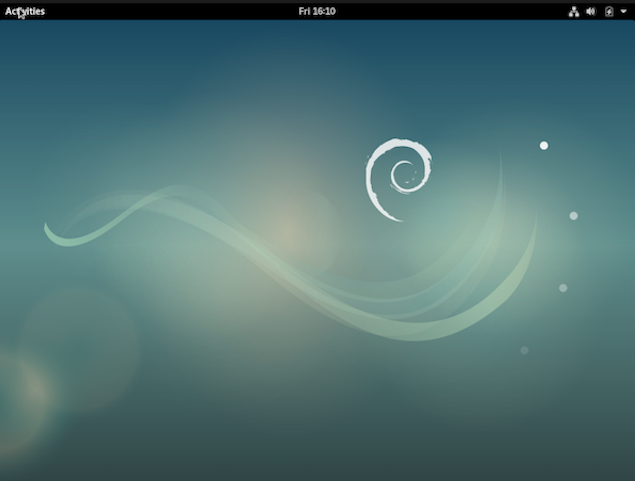
In June 2017, the ninth version of Debian Stretch was released. The distribution based on the LTS version 4.9 kernel supports such architectures , among them amd64, arm64, i386, armel, armhf, mips, mipsel, mips64el, ppc64el, s390x. Debian runs on almost all machines, even the oldest. Build MariaDB instead of MySQL. It is possible to install such graphical shells - Cinnamon, GNOME, KDE, LXDE, MATE, Xfce. Information about the release can be found by clicking on the link . In October, some packages were updated (release 9.2). Free, stable, reliable, versatile and powerful OS.
Fedora-based, the original Korora distribution was based on Gentoo Linux, its main task was to make Linux understandable not only for beginners, but also useful for experienced users. It is possible to choose a graphical shell: Cinnamon, GNOME, KDE, MATE or Xfce.
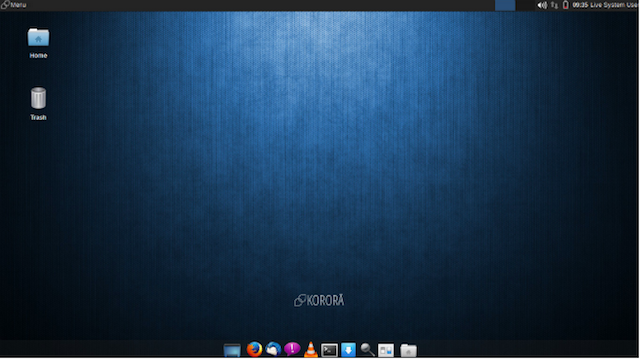
The Korora project announced the release of version 26 based on Fedora 26, codenamed “Bloat,” which is already available for download. Updates include Cinnamon 3.4, GNOME 3.24, KDE Plasma 5.10, Mate 1.18, Xfce 4.12, fast SSSD cache for local users. The release comes with the use of Canvas, users can customize the distribution for themselves and their needs.
A safe and easy distribution of Slackware is definitely a UNIX distribution of Linux, it is optimal for working with servers. An ancient and original distribution of Linux - this is how you can characterize it, a technology such as Systemd is alien to its developers.
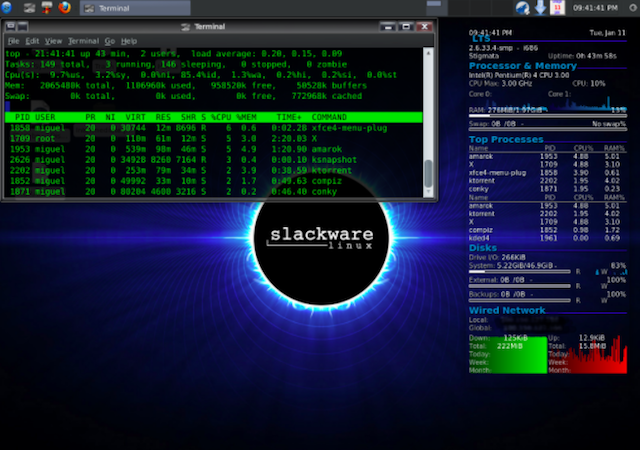
The release of the stable version of Slackware 14.2. after many beta versions, comes with kernel 4.4. Two kernel versions are available: monolithic and modular assemblies, support for such graphical shells KDE 4.14.21 (KDE 4.14.3 with kdelibs-4.14.21), Xfce 4.12.1. The distribution kit will force to patter over its adjustment, a lot of things will need to be done manually.
Mageia is a stable, secure OS for both personal computers and servers, initially it was a non-commercial fork of Mandriva Linux. Distribution - a good option for beginners, simple, convenient, multilingual, supports graphical shell - KDE, GNOME, MATE, LXDE, Xfce, Cinnamon.
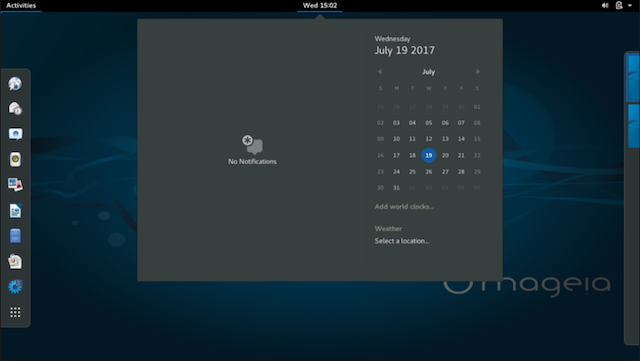
It is believed that the distribution slowly disappears, as updates rarely come out. But in July 2017, Linux Mageia 6 was released. Most likely the distribution is focused on home use. It is based on the Linux 4.9 kernel with the new DNF package manager.
SparkyLinux is based on Debian 8. Testing. The basic version comes with LXDE GUI, other interfaces are available for users. SparkyLinux is a lightweight, fast and simple Linux distribution with customizable Enlightenment and LXDE desktops. You can work with him on both the new and the old hardware. The latest version of SparkyLinux 5.1, code-named Buster based on Linux kernel 4.12.13, the default installer - Calamares, updated to version 3.1.4.

Documentation and console to help you adapt Gentoo Linux to almost any requirements. The stability of the system and the presence of many applications are inalienable advantages of the distribution kit. Portage’s powerful and flexible package management system is available. The complete absence of any installer and build from the source and compiler options is such a designer-lego, high complexity and space for the quest to set up the system.

In the case of installing Gentoo, the process of adapting newbies to a Linux system will be completed.
CentOS is a unique version of the Red Hat Enterprise Linux paid distribution. Increased stability and gratuity in distributing the distribution of the corporate level. Indispensable for comfortable work with servers. Plus systems CentOS: all software products that are designed for Linux are working.

The system is not designed for beginners - no simplifications, your server will be safe and stable, GCC technologies are used as SSP (stack protection), PIE. If you use Red Hat at work, it makes sense to use CentOS at home - there are few differences and savings on the face.
Fedora Design Suite was created for users who need software to work with multimedia content. Tools like Inkscape, Krita and GIMP are available.

Just as Ubuntu comes in different "variants" (Kubuntu, Xubuntu, Edubuntu, etc.), Fedora also has specialized builds - Spins and Labs. Design Suite handles the same features as the main version of Fedora; GUI - Gnome.
The first release of Ubuntu Studio was released in 2007, this OS is chosen by Linux users who work a lot with multimedia programs - graphic designers, creative people.

The system uses XFCE as its graphical environment. The latest version of Ubuntu Studio 17.04 Zesty Zapus was released in early 2017. Multimedia applications are available for users: Darktable, RawTherapee, Kdenlive, Pitvi, OpenShot, Synfig Studio, Cinelerra, Gimp, Blender.
KXStudio - Linux distribution for those to whom the bear has not stepped on the ear. OS for people involved in music, the configuration of the installed programs will please: Alsa, Jack, Wine + WineAsio, etc. The graphical shell, KDE 4.11, comes with a low-latency kernel.
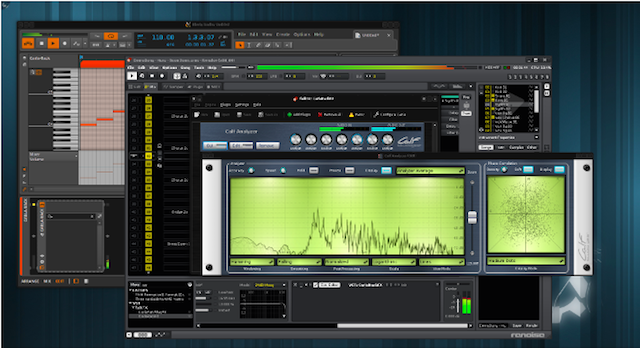
Mainly working with animation, 3D-modeling, photo editors? Iro - what you appreciate.
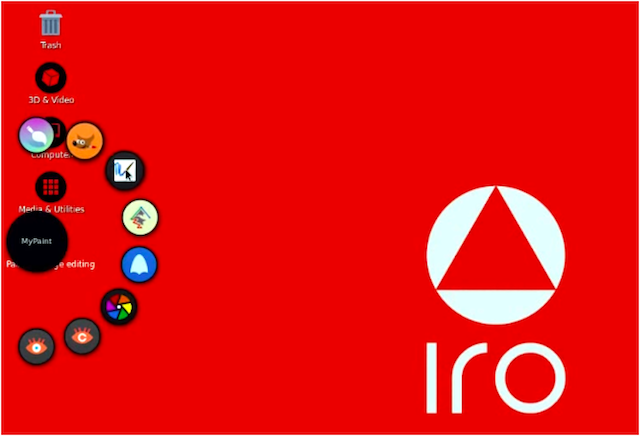
A simple operating system for the production of computer graphics. No need to conjure up its installation to create masterpieces in drawing programs, work with video. No fuss. Iro is a portable OS, it can be run from USB or DVD.
Edubuntu development was supposed to make working with the OS as easy as possible for teachers and children of any age. The OS comes with all the best free educational software GCompris, KDE Education Project, SchoolTool calendar. It comes with the GNOME GUI, but it is possible to install KDE.
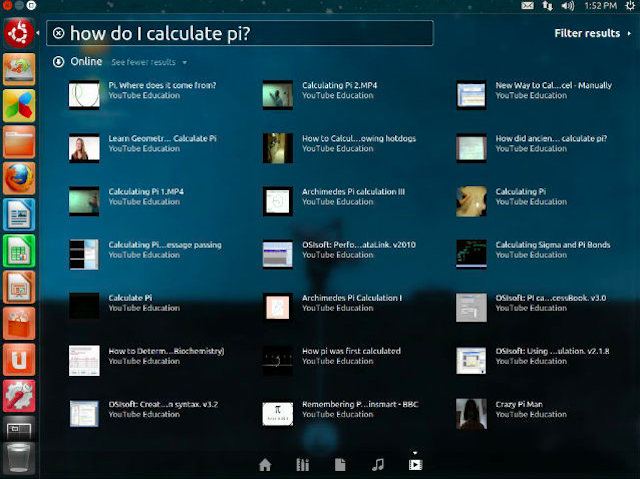
In the presence of a large repository of educational programs, in addition to standard office applications and applications for working with multimedia, there are tools for programming (Basic, Pascal, Haskell, Java, Lisp, Perl) and web development. In total, users are offered 34,000 programs.
Uberstudent is a Linux distribution tutorial that targets students, starting from middle and high schools, comes with pre-installed software. Graphic shell - Xfce with settings.

OS with a variety of standard and useful applications (LibreOffice, Chromium, Firefox, Thunderbird), a wide range of training software is available to users. Everything is created to not only simplify the execution of tasks, but also to optimally manage tasks.
Standard OS for the popular Raspberry Pi. Raspbian Jessie is not just a new version of the main Pi operating system based on Debian, it is designed to make it even easier to use the Pi operating system.

In this distribution, there are two new programming tools: BlueJ and Greenfoot, they will be of interest to those who study Java programming. Since October 2016, Raspbian Jessie has been using the new work environment - PIXEL.
Similar to Raspbian, the stylish Kano OS for the Raspberry Pi was designed to make it easier for beginners to get to know and work with devices. Intuitive Debian based operating system. A simple interface with the necessary tools designed for comfortable work, even for children; the recompiled kernel and the trimmed system, and you can install the OS using the apt-get method; there is your own update manager.
Lubuntu is a lightweight, energy efficient and reliable Linux distribution based on Ubuntu. To run this operating system, a small amount of used memory is enough (512 MB of RAM is enough), in a word - a lightweight OS. The LXDE desktop and a set of lightweight applications are used, targeting speed and energy efficiency.
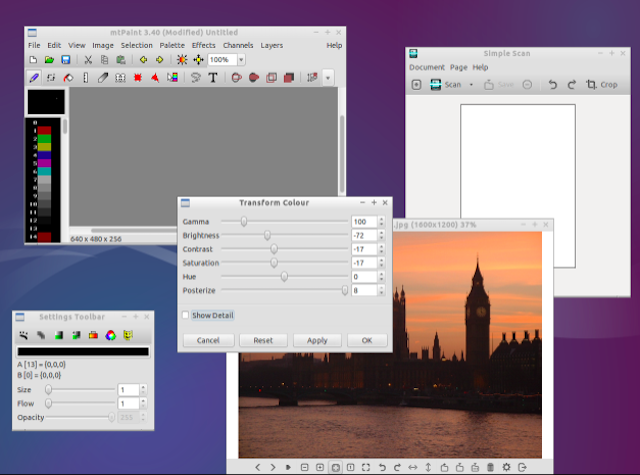
Lubuntu is almost Ubuntu with LXDE GUI. The functional Lubuntu distribution is aimed at older machines, but it will work fine on new hardware. In addition to a convenient graphical interface, Lubuntu offers a wide range of applications that will ensure comfortable work for users: web surfing, work with media content, games.
Xubuntu is a simple and aesthetically appealing OS based on Ubuntu. Xfce is the graphical environment of this OS. Perfectly suited for installation on laptops, netbooks, low requirements allow you to install it even on older machines.
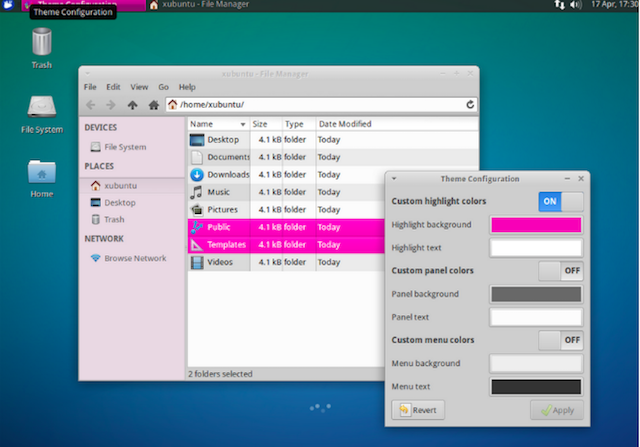
There are two Xubuntu options: Live CD (you can work from disk) and Alternate Install CD (for installation only). Stable, neat and practical distribution. The current version of Xubuntu is 16.04 with the code name Xenial Xerus based on Linux kernel 4.4, LibreOffice 5.1.2.2, Mozilla Firefox 45.0.2, with Thunderbird 38.6 email client, Thunar 1.6.10 file manager.
Run a simple Puppy Linux just from RAM, the OS will be installed on old machines, the presence of a hard disk is optional. It is possible to install it as an additional one without changing the main OS.
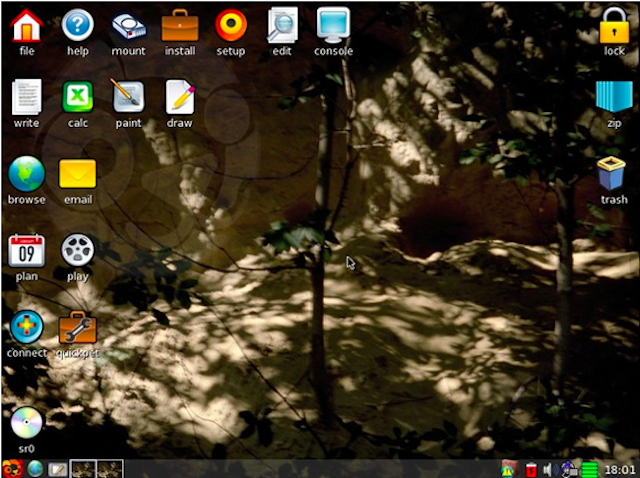
A small, but fast distribution of Puppy Linux based on Slackware - just take the installation image on a flash drive and run it in LiveCD mode. In the presence of a large number of tools and programs for setting up the system, there is all the necessary software for everyday work while the system is smart, programs are recorded in separate modules, connect when there is a need, save memory. Elixir of youth for old iron.
OS Manjaro Linux is designed to provide a wide range of users access to the power and simplicity of Arch Linux. OS absorbed all the advantages of Arch Linux +, it is more convenient and accessible for beginners. The default is the Xfce graphical environment. Supports multiple kernels. Powerful distribution with Pacman package manager.
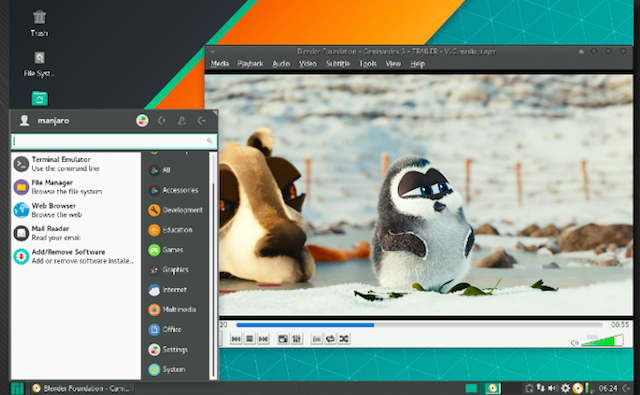
The main feature of Manjaro Linux is simple installation and removal of kernels. Although the distribution is based on ArchLinux, installing graphics drivers in Manjaro is easy. Manjaro has speed, power and efficiency, access to the user repository (AUR).
Arch Linux is a naked distribution, comes with a minimal set of packages and a console interface, flexible in configuration. The OS can be customized, you can install almost all graphical interfaces and freely switch between them.

Among the indisputable advantage is the speed of updating packages. Want to learn Linux - this distribution is for you. Under Arch Linux is good Archwiki documentation. There is an official repository and a user repository - AUR (Arch User Repository), with its help you can compile and install any software, the installation is carried out manually, through the terminal, in text mode. There is a package manager - Pacman in pkg format.
Tiny Core is a 15 MB mini-distribution Linux distribution that will work even on low-power hardware. Installation in text mode. Tiny Core uses the kernel version of BusyBox and Flwm window managers.
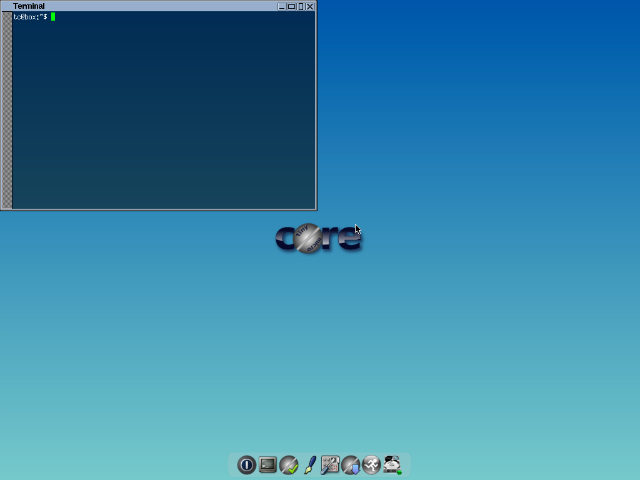
Among the advantages are a considerable repository of applications, the ability to build a system based on extensions (extension's) and a backup file. Surely we can say that this distribution is not for beginners, but for experienced and experienced Linux users. Tiny Core 8.0 - the latest version based on the new kernel, updated versions of the components busybox, glibc and gcc, as well as many other improvements. The new core allows the distribution to work successfully with more modern hardware.
Bodhi is a lightweight version of Ubuntu Linux with a flexible Enlightenment window manager (productivity, animation support, Unicode) with the Moksha desktop environment (the non-working Enlightenment 17 functions are improved in it). The distribution will work well on the old low-power hardware. Intuitive, easy and convenient.

Standardly, Bodhi has only five applications installed: lightweight Midori browser, Terminology terminal, PCManFM file manager, ePhoto for viewing graphic files, lightweight ePad pdf file viewer. To install other programs, there is the AppCenter web tool. Minimum requirements: 300 MHz processor, 128 MB of RAM, 2.5 GB free disk quota.
Games on Linux are becoming more in demand, if you are a gamer install Steam OS, it has significantly improved graphics processing performance. A very economical system, of the strict requirements is only one - to the processor, it must be with a 64-bit architecture, there are no restrictions about the manufacturers of the video adapter.

If we talk about the hardware base on which you are installing SteamOS, then these are gaming computers from the company that created Valve - the Steam Machine. Steam Machines are devices that can be replaced by consoles. Initially, “Valve conceived of SteamOS as an operating system for the Steam Machines game console. Nevertheless, any user can install SteamOS and enjoy games in a Linux environment. ”Among its features are cross-platform support for many games from the Steam store, your GNOME-based desktop, you can choose to play on the keyboard or the joystick.
Do you want to install a new OS and start playing right away? Such an opportunity is provided to you with a special Ubuntu GamePack game assembly, an updated distribution kit that provides the means for running almost 22,000 games and applications, this applies to both the Linux platform and Windows and MS-DOS.

Fedora Games Spin is a Linux distribution that is suitable for gamers, this is a game version with many pre-installed toys (opensource games collection). No installation required, can be run from a USB drive / DVD.
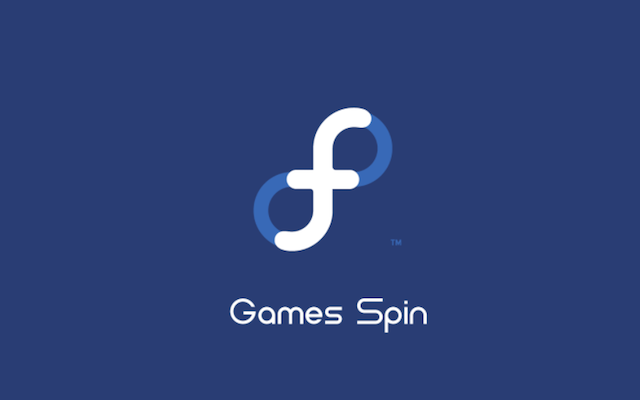
Here is the full list of games .
There are many available versions of SparkyLinux, but perhaps this is the most successful, if you choose the "game-oriented" distribution. Together with the Sparky Linux GameOver, users can access the pre-installed games, the Steam client, PlayOnLinux and Wine for running games written under Window, as well as DOSbox.

Kali Linux (formerly BackTrack) is a good computer security operating system based on the Linux kernel. The distribution is popular for testing security, the Debian-based OS comes with more than 600 security utilities.
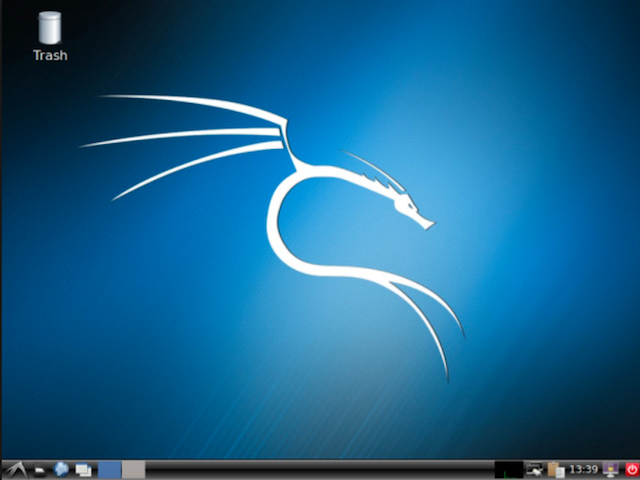
Parted Magic is a lightweight Linux distribution that is designed to manage partitions. Livecd
for disk layout, a small distributive for rescue operations. On 80 MB there are many utilities of the profile direction, X-server, Xfce working environment.
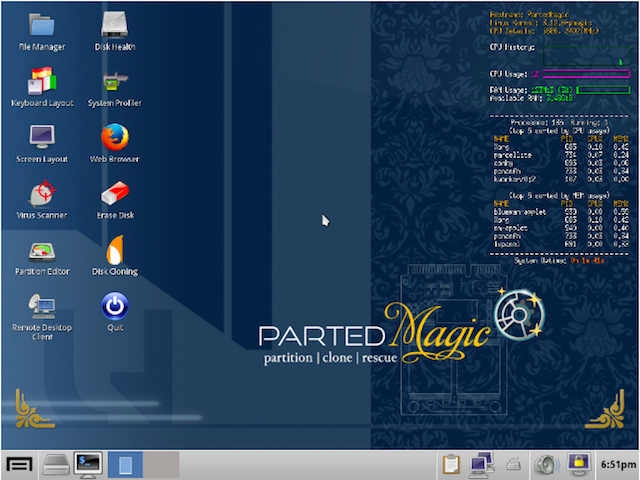
GParted (GNOME Partition Editor) - another universal distribution, allows you to manage partitions on hard drives, on devices for storing information. Perform various disk operations using GParted.
TAILS is a Debian-based Linux distribution specifically designed to ensure privacy and anonymity. The OS is open source, uses Tor technology, to install it you need a CD / DVD drive or USB flash drive, SD card, 64-bit (x86-64) compatible processor, 2 GB of RAM.

Red Hat Enterprise Linux is a commercial Fedora project designed to meet the needs of corporate customers. Support for 10 years, there is no support for MP3 and DivX, access to binary update packages is paid.

SUSE Linux Enterprise - a Linux distribution from SUSE, a ready and flexible OS for workstations, simplifies working with various office software. Two versions, server and for a desktop, - the reliable decision for the enterprises. Distribution based on .rpm-packages. There are two modifications of the distribution kit - SUSE Linux Enterprise Server, SUSE Linux Enterprise Desktop. The first modification is characterized by reliability and high speed, this distribution is suitable for building high-performance servers. The second modification of SUSE Linux Enterprise Desktop for corporate desktop users.
SUSE Linux Enterprise Server 12 — 3.12, systemd, kraft Linux , , , Wicked, YaST Ruby, MariaBD YSQL, Btrfs Ceph, virt-sandbox, GNOME 3.10, SUSE Linux Enterprise Classic.
, , .
As advertising. These are not just virtual servers! VPS (KVM) , , — ! We made VPS (KVM) with dedicated drives in the Netherlands and the USA (configurations from VPS (KVM) - E5-2650v4 (6 Cores) / 10GB DDR4 / 240GB SSD or 4TB HDD / 1Gbps 10TB available at a uniquely low price - from $ 29 / month , options are available with RAID1 and RAID10) , do not miss the chance to place an order for a new type of virtual server, where all resources belong to you, as on a dedicated one, and the price is much lower, with a much more productive hardware!
How to build the infrastructure of the building. class c using servers Dell R730xd E5-2650 v4 worth 9000 euros for a penny? Dell R730xd 2 times cheaper? Only we have 2 x Intel Dodeca-Core Xeon E5-2650v4 128GB DDR4 6x480GB SSD 1Gbps 100 TV from $ 249 in the Netherlands and the USA!

Here is a regularly updated list of Linux operating systems, optimally suited for specific needs and requirements of the project. Material - adaptive translation of the article Christian Cawley The Best Linux Operating Systems .
Here is a list:
')
- Linux for beginners
- Main distributions
- LINUX distribution for creativity
- Learning Distributions
- Distros for Raspberry Pi
- Lightweight distributions
- Video game distributions
- Security distros
- Distributions for corporate clients
Linux for beginners
Ubuntu
Ubuntu, a distribution based on Debian, has released a new version of the popular Linux distribution Ubuntu - 17.10 Artful Aardvark with the Gnome 3 (3.26) and Gnome Shell GUI (it is characterized by higher customization and flexibility). Ubuntu is one of the most widely used Linux operating systems. When switching to Linux, most likely this distribution will be one of the first that you start to use. There is even a raspberry version for the Raspberry Pi. For downloading of version 17.10 only 64-bit edition is available (1.4 GB).

Features and changes:
- the new GNOME desktop — the biggest change has been to the desktop environment. In Ubuntu version 17.10 instead of Unity - GNOME, version 3.26.1.
- Wayland (protocol of interaction between KOM and clients). By default, the display server is Wayland, but for systems and users who prefer X.Org, you can choose the “Ubuntu on X.org” session
- new on-screen keyboard Caribou
- server build with updated versions of QEMU 2.10, libvirt 3.6, DPDK 17.05.2, Open vSwitch 2.8, Samba 4.6.7
About the main innovations by clicking on the link
Kubuntu
Ubuntu has many derivatives, the Kubuntu distribution is one of them, using the KDE GUI. Kubuntu's user-friendly OS is part of the Ubuntu project. A free and open-source alternative to Windows and Mac OS X that contains everything you need to work. By default, Kubuntu comes with a Firefox browser. Other browsers (Chromium, Rekonq) can be installed from the Kubuntu repositories. KDE Telepathy - Kubuntu messenger - allows you to communicate via Facebook, Google Talk, AIM, ICQ, Jabber, Messenger, Skype, etc. The Kubuntu distribution comes with music and a video player: just choose a track or video, and Kubuntu takes care of the rest. LibreOffice (office application) is compatible with all office applications, including Microsoft Office.

On October 19th, Kubuntu 17.10 Artful Aardvark was released. 1400 developers worked on making corrections - 14 thousand fixes, half of which are related to device drivers.
Major innovations release by clicking on the link
Mint
Linux Mint - the freedom that led to elegance - a powerful and simple distribution. Based on Ubuntu Linux, Mint is a reliable distribution, according to DistroWatch (a news site specializing in OS ratings publishing). Linux Mint recently held a leading position in the ranking among users who have switched to Linux from Windows or macOS.

Mint uses the free Cinnamon GUI, it can support others - Xfce, MATE, KDE. There is a Debian-based Linux Mint (LMDE) that is aimed at experienced Linux users, less friendly than Ubuntu-based Linux Mint.
The latest release of Linux Mint 18.2, codenamed “Sonya,” based on Ubuntu 16.04 LTS and Linux 4.8 kernel, comes with new versions of the desktop cinnamon 3.4, MATE 1.18, KDE Plasma 5.8 LTS and Xfce 4.12. Minimum system requirements for installing Linux Mint 18.2: 1 GB of RAM, 15 GB of disk space.
In September, there was news about the start of work on the release of Linux Mint 18.3, codenamed "Sylvia / Sylvia". In addition to the name, we also know that the distribution kit will be supplemented with the Timeshift backup tool, improvements have been made to the Xreader. "Timeshift is a great utility that will work in conjunction with the mintBackup application by default." Improvements will also affect the PDF reader toolbar (Xreader).
Deepin
Deepin is a distribution that was previously based on Ubuntu, with DDE GUI. For those who have switched from Windows or macOS to Linux, the simplicity of the distribution kit will please, the OS is nice and friendly with normal settings, there is a window manager - Gala. The visual effects and attractive appearance of the distribution are a nice plus. The new version 15.4.1 added sound effects and system sounds. The distribution comes with its own applications such as Deepin Software Center, DMusic, DPlayer. Excellent alternative to Windows for a wide range of users (home and office), support for 30 languages (even Hindi). After optimizing the effects of the window manager, you can set a different wallpaper for each workspace. Gesture support for multi-touch.

Application Center - Deepin Store, easy to view and install software, which is important for new Linux users. As for the minimum system requirements: 1 GB of RAM, 10 GB of free disk quota.
PCLinuxOS
PCLinuxOS is positioned as one of the most common Linux distributions among newbies, the KDE Plasma Desktop GUI is installed as standard. You can easily install drivers, office applications, edit photos, comfortable work with multimedia - provided. By the way, it is perfect as a second OS. In PCLinuxOS there is a full set of applications for comfortable web surfing, e-mailing, messaging, viewing online video, GIMP, Picasa and others for working with multimedia content, the office application LibreOffice.

Proceeding from the name PCLinuxOS is the desire to “bring together” the Windows and Linux operating systems. How do you have the Windowsesque start menu? Among the features of PCLinuxOS is the speed of deployment and compactness of the installation, the disadvantages are the problem with fake RAID and the lack of support for the btrfs file system. Distribution undemanding to resources: minimum 512 MB of RAM, 12 minimum and 20+ GB (for full installation) free disk quota.
Linux lite
Linux Lite based on Ubuntu LTS is one of the simplest distros, successfully adapted for those who take the first steps in Linux, with a simple, intuitive Xfce graphical environment. The "Start" menu is made in the spirit of Windows. The flexibility of the system comes with a basic set of applications that will suit both novice Linux users and more advanced ones.
Linux Lite is the most friendly and understandable OS that will simplify the transition to Linux from Windows. Thunar version 1.6.11 is the default file manager, Firefox 52.0.2 is a browser, there are applications for working with multimedia Gimp 2.8.20, VLC media player version 2.2.2, office application is LibreOffice 5.1.6. Non-resource-intensive Linux Lite can be installed on old hardware, there will be enough 512 MB RAM.
Zorin os
Zorin OS is focused on Linux newbies, Windows users will easily and painlessly change it, since the interface is very similar to Windows Explorer in Microsoft Windows. The distribution was created based on Ubuntu. There are many analogues of Windows applications.

The similarity of Zorin OS 9 with Windows 7 eliminates discomfort when moving to Linux! According to the developers, the transition to Zorin OS is like a breeze. You can even run many Windows applications inside Zorin using Wine . Fast, powerful, secure - this will be your device with this distribution.
The Zorin OS team this summer announced the release of the Zorin OS 12 Lite. Now, as a basic desktop environment - Xfce, which opens up a wide field for customization and settings. Zorin OS 12 Lite runs on the Linux kernel version 4.8.
Elementary OS
Elementary OS is a fast and easy Ubuntu-based distribution. As a graphic shell - minimalistic Pantheon. Elementary OS is an aesthetically appealing OS with simple applications: Pantheon Files file manager, Geary email client, Midori lightweight and functional browser, Totem free media player, Shotwell photo manager. Elementary OS apps run fast and meet user everyday needs. Few opportunities for customization and fine-tuning - as a fee for absolute simplicity.
Do you have to pay for everything, even open source software? The developers of Elementary OS will gladly accept your contribution to the support of the OS. There is a desire to feel the attractive appearance of macOS, the comfort of Windows and the stability of Linux, then Elementary OS can be your choice.
Main distributions
openSUSE
The popular openSUSE is, so to speak, the “user friendly” distribution of Linux, attractive and interesting for newbies in the Linux world, but also useful for developers, because openSUSE products allow you to get the full source code for each binary package in the distribution. Positioned as "the best choice for system administrators, developers and ordinary users." The distribution supports such GUIs - GNOME, KDE, Xfce, LXDE, E19.

The openSUSE distribution tools are: Open Build Service (OBS) , openQA , YaST , Kiwi . This summer, openSUSE Leap 42.3 was released . Minimum system requirements: Pentium 4 processor 1.6 GHz or higher, from 1 GB RAM, from 3 GB free disk quota.
Fedora
By default, Fedora comes with the GNOME GUI, it is possible to quickly and easily change the graphical skins (KDE, Xfce, LXDE, MATE and Cinnamon). Love to experience and work with new versions of programs, then the distribution kit will best suit your requests.

In July 2017, the release of the Fedora 26 operating system for personal computers, servers, cloud and embedded devices became available. Many improvements were made: GNOME 3.24.2 graphical shell (Fedora Workstation), Linux based OS 4.11.8, default package manager DNF 2.0, compiler GCC 7. Fedora 26 comes with updated versions of Python 3.6, OpenSSL 1.1 .0, Boost 1.63, Ruby 2.4, GHC 8.0, Golang 1.8.
Debian
Debian is the oldest and most popular Linux distribution with the GNOME GUI. There are projects based on other Debian GNU / kFreeBSD kernels (the FreeBSD kernel), Debian GNU / Hurd (with the GNU Hurd kernel) and others are being developed.

In June 2017, the ninth version of Debian Stretch was released. The distribution based on the LTS version 4.9 kernel supports such architectures , among them amd64, arm64, i386, armel, armhf, mips, mipsel, mips64el, ppc64el, s390x. Debian runs on almost all machines, even the oldest. Build MariaDB instead of MySQL. It is possible to install such graphical shells - Cinnamon, GNOME, KDE, LXDE, MATE, Xfce. Information about the release can be found by clicking on the link . In October, some packages were updated (release 9.2). Free, stable, reliable, versatile and powerful OS.
Korora
Fedora-based, the original Korora distribution was based on Gentoo Linux, its main task was to make Linux understandable not only for beginners, but also useful for experienced users. It is possible to choose a graphical shell: Cinnamon, GNOME, KDE, MATE or Xfce.

The Korora project announced the release of version 26 based on Fedora 26, codenamed “Bloat,” which is already available for download. Updates include Cinnamon 3.4, GNOME 3.24, KDE Plasma 5.10, Mate 1.18, Xfce 4.12, fast SSSD cache for local users. The release comes with the use of Canvas, users can customize the distribution for themselves and their needs.
Slackware linux
A safe and easy distribution of Slackware is definitely a UNIX distribution of Linux, it is optimal for working with servers. An ancient and original distribution of Linux - this is how you can characterize it, a technology such as Systemd is alien to its developers.

The release of the stable version of Slackware 14.2. after many beta versions, comes with kernel 4.4. Two kernel versions are available: monolithic and modular assemblies, support for such graphical shells KDE 4.14.21 (KDE 4.14.3 with kdelibs-4.14.21), Xfce 4.12.1. The distribution kit will force to patter over its adjustment, a lot of things will need to be done manually.
Mageia
Mageia is a stable, secure OS for both personal computers and servers, initially it was a non-commercial fork of Mandriva Linux. Distribution - a good option for beginners, simple, convenient, multilingual, supports graphical shell - KDE, GNOME, MATE, LXDE, Xfce, Cinnamon.

It is believed that the distribution slowly disappears, as updates rarely come out. But in July 2017, Linux Mageia 6 was released. Most likely the distribution is focused on home use. It is based on the Linux 4.9 kernel with the new DNF package manager.
Sparky linux
SparkyLinux is based on Debian 8. Testing. The basic version comes with LXDE GUI, other interfaces are available for users. SparkyLinux is a lightweight, fast and simple Linux distribution with customizable Enlightenment and LXDE desktops. You can work with him on both the new and the old hardware. The latest version of SparkyLinux 5.1, code-named Buster based on Linux kernel 4.12.13, the default installer - Calamares, updated to version 3.1.4.

Gentoo linux
Documentation and console to help you adapt Gentoo Linux to almost any requirements. The stability of the system and the presence of many applications are inalienable advantages of the distribution kit. Portage’s powerful and flexible package management system is available. The complete absence of any installer and build from the source and compiler options is such a designer-lego, high complexity and space for the quest to set up the system.

In the case of installing Gentoo, the process of adapting newbies to a Linux system will be completed.
CentOS
CentOS is a unique version of the Red Hat Enterprise Linux paid distribution. Increased stability and gratuity in distributing the distribution of the corporate level. Indispensable for comfortable work with servers. Plus systems CentOS: all software products that are designed for Linux are working.

The system is not designed for beginners - no simplifications, your server will be safe and stable, GCC technologies are used as SSP (stack protection), PIE. If you use Red Hat at work, it makes sense to use CentOS at home - there are few differences and savings on the face.
LINUX distribution for creativity
Fedora Design Suite
Fedora Design Suite was created for users who need software to work with multimedia content. Tools like Inkscape, Krita and GIMP are available.

Just as Ubuntu comes in different "variants" (Kubuntu, Xubuntu, Edubuntu, etc.), Fedora also has specialized builds - Spins and Labs. Design Suite handles the same features as the main version of Fedora; GUI - Gnome.
Ubuntu studio
The first release of Ubuntu Studio was released in 2007, this OS is chosen by Linux users who work a lot with multimedia programs - graphic designers, creative people.

The system uses XFCE as its graphical environment. The latest version of Ubuntu Studio 17.04 Zesty Zapus was released in early 2017. Multimedia applications are available for users: Darktable, RawTherapee, Kdenlive, Pitvi, OpenShot, Synfig Studio, Cinelerra, Gimp, Blender.
KXStudio
KXStudio - Linux distribution for those to whom the bear has not stepped on the ear. OS for people involved in music, the configuration of the installed programs will please: Alsa, Jack, Wine + WineAsio, etc. The graphical shell, KDE 4.11, comes with a low-latency kernel.

Iro
Mainly working with animation, 3D-modeling, photo editors? Iro - what you appreciate.

A simple operating system for the production of computer graphics. No need to conjure up its installation to create masterpieces in drawing programs, work with video. No fuss. Iro is a portable OS, it can be run from USB or DVD.
Learning Distributions
Edubuntu
Edubuntu development was supposed to make working with the OS as easy as possible for teachers and children of any age. The OS comes with all the best free educational software GCompris, KDE Education Project, SchoolTool calendar. It comes with the GNOME GUI, but it is possible to install KDE.

In the presence of a large repository of educational programs, in addition to standard office applications and applications for working with multimedia, there are tools for programming (Basic, Pascal, Haskell, Java, Lisp, Perl) and web development. In total, users are offered 34,000 programs.
Uberstudent
Uberstudent is a Linux distribution tutorial that targets students, starting from middle and high schools, comes with pre-installed software. Graphic shell - Xfce with settings.

OS with a variety of standard and useful applications (LibreOffice, Chromium, Firefox, Thunderbird), a wide range of training software is available to users. Everything is created to not only simplify the execution of tasks, but also to optimally manage tasks.
Distros for Raspberry Pi
Raspbian jessie
Standard OS for the popular Raspberry Pi. Raspbian Jessie is not just a new version of the main Pi operating system based on Debian, it is designed to make it even easier to use the Pi operating system.

In this distribution, there are two new programming tools: BlueJ and Greenfoot, they will be of interest to those who study Java programming. Since October 2016, Raspbian Jessie has been using the new work environment - PIXEL.
Kano os
Similar to Raspbian, the stylish Kano OS for the Raspberry Pi was designed to make it easier for beginners to get to know and work with devices. Intuitive Debian based operating system. A simple interface with the necessary tools designed for comfortable work, even for children; the recompiled kernel and the trimmed system, and you can install the OS using the apt-get method; there is your own update manager.
Lightweight distributions
Lubuntu
Lubuntu is a lightweight, energy efficient and reliable Linux distribution based on Ubuntu. To run this operating system, a small amount of used memory is enough (512 MB of RAM is enough), in a word - a lightweight OS. The LXDE desktop and a set of lightweight applications are used, targeting speed and energy efficiency.

Lubuntu is almost Ubuntu with LXDE GUI. The functional Lubuntu distribution is aimed at older machines, but it will work fine on new hardware. In addition to a convenient graphical interface, Lubuntu offers a wide range of applications that will ensure comfortable work for users: web surfing, work with media content, games.
Xubuntu
Xubuntu is a simple and aesthetically appealing OS based on Ubuntu. Xfce is the graphical environment of this OS. Perfectly suited for installation on laptops, netbooks, low requirements allow you to install it even on older machines.

There are two Xubuntu options: Live CD (you can work from disk) and Alternate Install CD (for installation only). Stable, neat and practical distribution. The current version of Xubuntu is 16.04 with the code name Xenial Xerus based on Linux kernel 4.4, LibreOffice 5.1.2.2, Mozilla Firefox 45.0.2, with Thunderbird 38.6 email client, Thunar 1.6.10 file manager.
Puppy linux
Run a simple Puppy Linux just from RAM, the OS will be installed on old machines, the presence of a hard disk is optional. It is possible to install it as an additional one without changing the main OS.

A small, but fast distribution of Puppy Linux based on Slackware - just take the installation image on a flash drive and run it in LiveCD mode. In the presence of a large number of tools and programs for setting up the system, there is all the necessary software for everyday work while the system is smart, programs are recorded in separate modules, connect when there is a need, save memory. Elixir of youth for old iron.
Manjaro linux
OS Manjaro Linux is designed to provide a wide range of users access to the power and simplicity of Arch Linux. OS absorbed all the advantages of Arch Linux +, it is more convenient and accessible for beginners. The default is the Xfce graphical environment. Supports multiple kernels. Powerful distribution with Pacman package manager.

The main feature of Manjaro Linux is simple installation and removal of kernels. Although the distribution is based on ArchLinux, installing graphics drivers in Manjaro is easy. Manjaro has speed, power and efficiency, access to the user repository (AUR).
Arch linux
Arch Linux is a naked distribution, comes with a minimal set of packages and a console interface, flexible in configuration. The OS can be customized, you can install almost all graphical interfaces and freely switch between them.

Among the indisputable advantage is the speed of updating packages. Want to learn Linux - this distribution is for you. Under Arch Linux is good Archwiki documentation. There is an official repository and a user repository - AUR (Arch User Repository), with its help you can compile and install any software, the installation is carried out manually, through the terminal, in text mode. There is a package manager - Pacman in pkg format.
Tinny core
Tiny Core is a 15 MB mini-distribution Linux distribution that will work even on low-power hardware. Installation in text mode. Tiny Core uses the kernel version of BusyBox and Flwm window managers.

Among the advantages are a considerable repository of applications, the ability to build a system based on extensions (extension's) and a backup file. Surely we can say that this distribution is not for beginners, but for experienced and experienced Linux users. Tiny Core 8.0 - the latest version based on the new kernel, updated versions of the components busybox, glibc and gcc, as well as many other improvements. The new core allows the distribution to work successfully with more modern hardware.
Bodhi
Bodhi is a lightweight version of Ubuntu Linux with a flexible Enlightenment window manager (productivity, animation support, Unicode) with the Moksha desktop environment (the non-working Enlightenment 17 functions are improved in it). The distribution will work well on the old low-power hardware. Intuitive, easy and convenient.

Standardly, Bodhi has only five applications installed: lightweight Midori browser, Terminology terminal, PCManFM file manager, ePhoto for viewing graphic files, lightweight ePad pdf file viewer. To install other programs, there is the AppCenter web tool. Minimum requirements: 300 MHz processor, 128 MB of RAM, 2.5 GB free disk quota.
Game distributions
Steam os
Games on Linux are becoming more in demand, if you are a gamer install Steam OS, it has significantly improved graphics processing performance. A very economical system, of the strict requirements is only one - to the processor, it must be with a 64-bit architecture, there are no restrictions about the manufacturers of the video adapter.

If we talk about the hardware base on which you are installing SteamOS, then these are gaming computers from the company that created Valve - the Steam Machine. Steam Machines are devices that can be replaced by consoles. Initially, “Valve conceived of SteamOS as an operating system for the Steam Machines game console. Nevertheless, any user can install SteamOS and enjoy games in a Linux environment. ”Among its features are cross-platform support for many games from the Steam store, your GNOME-based desktop, you can choose to play on the keyboard or the joystick.
Ubuntu game pack
Do you want to install a new OS and start playing right away? Such an opportunity is provided to you with a special Ubuntu GamePack game assembly, an updated distribution kit that provides the means for running almost 22,000 games and applications, this applies to both the Linux platform and Windows and MS-DOS.

Fedora Games Spin
Fedora Games Spin is a Linux distribution that is suitable for gamers, this is a game version with many pre-installed toys (opensource games collection). No installation required, can be run from a USB drive / DVD.

Here is the full list of games .
SparkyLinux Game Over Edition
There are many available versions of SparkyLinux, but perhaps this is the most successful, if you choose the "game-oriented" distribution. Together with the Sparky Linux GameOver, users can access the pre-installed games, the Steam client, PlayOnLinux and Wine for running games written under Window, as well as DOSbox.

Security distros
Kali Linux
Kali Linux (formerly BackTrack) is a good computer security operating system based on the Linux kernel. The distribution is popular for testing security, the Debian-based OS comes with more than 600 security utilities.

Parted magic
Parted Magic is a lightweight Linux distribution that is designed to manage partitions. Livecd
for disk layout, a small distributive for rescue operations. On 80 MB there are many utilities of the profile direction, X-server, Xfce working environment.

GParted
GParted (GNOME Partition Editor) - another universal distribution, allows you to manage partitions on hard drives, on devices for storing information. Perform various disk operations using GParted.
TAILS
TAILS is a Debian-based Linux distribution specifically designed to ensure privacy and anonymity. The OS is open source, uses Tor technology, to install it you need a CD / DVD drive or USB flash drive, SD card, 64-bit (x86-64) compatible processor, 2 GB of RAM.

Distributions for corporate clients
Red Hat Enterprise Linux
Red Hat Enterprise Linux is a commercial Fedora project designed to meet the needs of corporate customers. Support for 10 years, there is no support for MP3 and DivX, access to binary update packages is paid.

Red Hat Enterprise Linux is used to deploy critical applications on global exchanges, financial institutions, leading telecommunications companies, animation studios.
SUSE Linux Enterprise
SUSE Linux Enterprise - a Linux distribution from SUSE, a ready and flexible OS for workstations, simplifies working with various office software. Two versions, server and for a desktop, - the reliable decision for the enterprises. Distribution based on .rpm-packages. There are two modifications of the distribution kit - SUSE Linux Enterprise Server, SUSE Linux Enterprise Desktop. The first modification is characterized by reliability and high speed, this distribution is suitable for building high-performance servers. The second modification of SUSE Linux Enterprise Desktop for corporate desktop users.
SUSE Linux Enterprise Server 12 — 3.12, systemd, kraft Linux , , , Wicked, YaST Ruby, MariaBD YSQL, Btrfs Ceph, virt-sandbox, GNOME 3.10, SUSE Linux Enterprise Classic.
, , .
As advertising. These are not just virtual servers! VPS (KVM) , , — ! We made VPS (KVM) with dedicated drives in the Netherlands and the USA (configurations from VPS (KVM) - E5-2650v4 (6 Cores) / 10GB DDR4 / 240GB SSD or 4TB HDD / 1Gbps 10TB available at a uniquely low price - from $ 29 / month , options are available with RAID1 and RAID10) , do not miss the chance to place an order for a new type of virtual server, where all resources belong to you, as on a dedicated one, and the price is much lower, with a much more productive hardware!
How to build the infrastructure of the building. class c using servers Dell R730xd E5-2650 v4 worth 9000 euros for a penny? Dell R730xd 2 times cheaper? Only we have 2 x Intel Dodeca-Core Xeon E5-2650v4 128GB DDR4 6x480GB SSD 1Gbps 100 TV from $ 249 in the Netherlands and the USA!
Source: https://habr.com/ru/post/342826/
All Articles